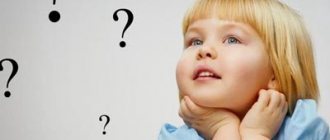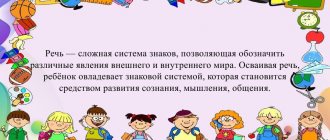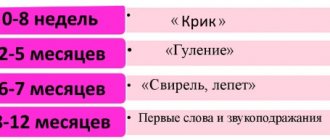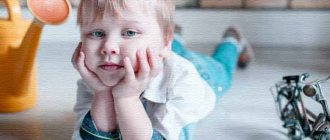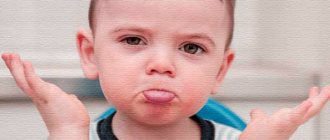Motor functions
Poses and movements
After the first year, all types of movements are improved. The final development of walking on fully straightened legs occurs only at 3-5 years. It takes even longer to improve the technique of running, jumping, and various sports games. But in general, we can say that at 1.5 years all children can walk independently.
We also note additional skills:
- turn back when walking (usually children aged 12-15 months can already),
- some children can already climb stairs,
- attempts to kick the ball (but still lack stability),
- steps over obstacles
- crouches.
Learning any movement requires repeated repetitions, so high activity of children, almost constant movement, is a necessary condition for proper development.
Actions with objects
The age of 1.5 years is interesting due to its rather active imitation of the actions of adults. The child tries to repeat them in all seriousness, which touches and pleases those around him. We can see a “serious” conversation on a toy phone, “reading” a book with active turning of pages (not always one at a time), active “helping” with cleaning the house, etc.
And the child can already hold a pencil (or chalk) and actively draw doodles.
We see more or less skillful use of a spoon, that is, at the age of 1.5 years, the child can already eat independently.
There are also more and more attempts to undress on your own. So far they have not worked out and come down to actively helping an adult in the process of undressing.
An important point is the development of manipulation of several objects simultaneously. If previously a child learned to manipulate 2 objects (put 1 object on top of another, put 1 object in another - a cube in a cube, a spoon in a cup), now it can be possible to build a pyramid of two to four cubes.
Baby skills at 1 year and 6 months to 1 year and 9 months:
- Hugs a teddy bear, doll or other toys in a dream.
- Walks confidently and tries new forms of movement, such as walking backwards or running.
- Drops toys from different heights to see where they land and what sound they make.
- Remembers a certain event and can then recall it in a day or two.
- Distinguishes objects by shape and color, can understand which is big and which is small.
- Holds a pen or pencil firmly, draws straight lines and zigzags on paper.
- Is oriented in several colors, can find a toy of the shade that an adult shows.
- Finds an object regardless of where and how it was hidden, that is, the concept of permanence is formed.
- Tries to imitate the actions performed by adults and begins to participate in household chores.
- Moves toys from place to place, scatters them around the house.
Children aged 18-20 months do not communicate with other children, but play in parallel, for example imitating them. Unfortunately, at this stage of growing up, hitting, biting or pushing another baby is natural. The task of parents is to react and prevent such behavior in the future.
Child growth from 1 year and 6 months to 1 year and 9 months - norms for boys and girls
- Girls: from 80.2 to 83.2 cm.
- Boys: from 82.0 to 84.7 cm.
Child weight from 1 year and 6 months to 1 year and 9 months - norms for boys and girls
- Girls: 10.9 to 11.7 kg.
- Boys: from 11.6 to 12.3 kg.
Speech development of a child aged 1.5 years
Typically, from 1 year to 1.5 years, a child learns about 8-10 new words per month.
At the age of 1.5 years, the child makes a “great linguistic discovery” (in Stern’s terminology) that every object has its own name. This discovery entails active curiosity with many questions: “Who is this?”, “What is this?” and we see a sharp increase in words remembered.
But at 1.5 years we also expect a qualitative transition in speech development - generalization of objects according to essential features. Let's explain what this means.
Up to 1.5 years old, a child can name objects that happen to be nearby in one word. For example, the boy called a frog, a pond, a swan, a liquid with the word “kva-kva”.
Now the child has to find, among completely different objects, located in different situations and different places, the common, essential features by which they will be united into a single group and called a single word.
For example, a big dog in the neighbors’ yard, a small dog in grandma’s dacha, a glass dog in mom’s kitchen, a soft toy dog in a child’s crib (and you can hug and stroke it, but you can’t touch others) . All these 4 phenomena - living and man-made, from different materials, with different functionality - belong to the word “dog”.
The child will have to do a lot of mental work to understand why exactly all these animal objects are called “dog”.
Speech development of children 1.5-2 years old
Tweet
Hello, friends! Today we will talk about the speech development of children 1.5 - 2 years old. The article was prepared by speech therapist Elena Barysheva. All articles on speech development can be found in the “Speech Development and Correction” section.
Speech development of children from 1.5 to 2 years old
The age from one and a half to two years is marked by relative calm, the crisis has passed, the child becomes older, more understanding and obedient. The level of development of a 2-year-old child often fluctuates depending on his personal characteristics. Try not to compare your child with other children, accept him for who he is. At this age, the child already understands a lot and it is important that he hears positive statements about himself. When a mother says that her child is lazy, cowardly or stupid, she forms a certain image of the personality and these, far from flattering definitions, become part of the child’s ideas about himself.
A child’s speech is formed under the influence of adult speech and depends to a great extent on sufficient speech practice, a normal speech environment, and on upbringing and training.
Example:
- Children from disadvantaged families speak poorly
- “Mowgli’s children” - they are outside the speech environment, no one educates them, if they do not find themselves in a prosperous environment before the age of 3-5, they will never be able to fully master literate speech. This does not mean that they will not learn to speak, but the speech will be significantly different from the speech to which we are accustomed.
At one and a half years, the child’s speech undergoes a transition from one period - the accumulation of vocabulary, to another - the mastery of active speech. Therefore, it is very important to pay attention to the development of a child’s speech at this age. It is important to remember that the development of speech of a one and a half year old child cannot occur independently, autonomously, but only together with knowledge of the world around him, with the development of sensory abilities.
Sound pronunciation
The development and formation of pronunciation in all children occurs at different times. Some children pronounce more sounds and more clearly, while others pronounce fewer and less clearly. The quality of pronunciation depends on the condition and mobility of the organs of the articulatory apparatus, which is just beginning to actively function, but there is still a so-called norm of speech development:
at 1 year 8 months. the child already pronounces vowels very well - a, u, o, and; consonants - p, b, m, k, g, n, t, d, l, s. The baby either does not pronounce most consonants at all, or pronounces them incorrectly, replacing them with sounds that are simpler in terms of articulation.
at 1 year 10 months. Hey, hey, hey. Often the initial sound in a word or the final consonant is omitted. A cluster of consonants appears in the middle of individual words LK, SK
at 1 year 10 months. – 2 years old, hard consonants T, D, N appear, most consonant clusters are replaced by one sound.
A number of hard consonants are replaced by soft ones.
The sound Y - its pronunciation requires very complex work of the organs of the articulatory apparatus, it is not without reason that few foreigners can pronounce this sound (they replace it with the sound I).
Dictionary
With the appearance of the child’s first words, the stage of development of active speech begins. At this time, the child develops special attention to the articulation of those around him. He very much and willingly repeats after the speaker and pronounces the words himself. At the same time, the baby confuses sounds, rearranges them, distorts them, and omits them.
The child’s first words are of a generalized semantic nature. With the same word or sound combination it can denote an object, a request, or feelings. For example, the word porridge can mean porridge at different moments; give me some porridge; hot porridge. Or the word dad - dad came; no dad; dad, come over, etc. You can understand a child only in a situation in which or about which his communication with an adult takes place. Therefore, such speech is called situational. The child accompanies situational speech with gestures and facial expressions.
From the age of one and a half years, the word acquires a generalized character. It becomes possible to understand an adult’s verbal explanation, assimilate knowledge, and accumulate new words.
Here is data on the development of children's vocabulary in the preschool period:
- by 1 year 6 months - 10-15 words;
- by 1 year 8 months – about 30 words;
- by 1 year 10 months – about 90 words;
- by the end of the 2nd year - 300 words (in 6 months about 300 words!).
The volume of the dictionary depends both on the conditions of the child’s upbringing, on the frequency of its explanation with adults, and the quality - on what words adults use more often in their speech, how they clearly indicate to the child what actions can be performed with toys, objects, and how he himself acts child, point to signs of surrounding objects (large, white cup).
Grammatical structure of speech
At approximately 1 year 10 months. The child develops phrasal speech: two amorphous words are combined in one sentence. Two-syllable words are reproduced, and one syllable is omitted in three-syllable words.
By the age of 2, children practically master the skills of using singular and plural forms of nouns, tense and person of verbs, and use some case endings. At this time, understanding an adult’s speech significantly exceeds pronunciation capabilities.
Speech understanding:
style=”display:block” data-ad-client=”ca-pub-5408867481523309″ data-ad-slot=”3490872770″ data-ad-format=”auto” data-full-width-responsive=”true”> —>
at 1 year and 3 months, the baby understands simple instructions with one action, for example: “Bring the ball”;
by 2 years of age, a child can follow instructions with 2 actions, for example: “Please find a ball and bring it to me,” is able to follow verbal instructions that are not supported by the actions of adults;
After 1.5 years, the child can listen if the parent says: “Not now. Maybe later".
By the way, at one and a half to two years the speech of boys and girls is most often noticeably different: almost all girls are ahead of their peers - boys in speech development. But this difference will disappear in a short time, so there is no need to compare your son’s first attempts to speak coherently with the lively speech of a neighbor’s or friend’s daughter. Very little time will pass and the children will be equal in their successes.
Ps You can independently diagnose your child’s speech under the guidance of Elena Barysheva. Diagnostics will take place over 5 days in the form of games with the baby. After completing the diagnostic week, you will be able to determine the level of:
- understanding of speech in a child,
- development of articulatory and fine motor skills,
- auditory attention and sensory development, which is the basis for normal speech development.
Also, these games will help you determine what kind of active vocabulary your baby has, and whether his sound pronunciation corresponds to age standards.
To diagnose your child’s speech under the guidance of an experienced speech therapist, you need to subscribe!
Take part in the diagnostic week “As My Baby Says”!
Elena Barysheva, especially for
Did you like the article? Share it with your friends!
style=”display:inline-block;width:320px;height:100px” data-ad-client=”ca-pub-5408867481523309″ data-ad-slot=”4039487537″>
Communication with adults and the development of emotions in a child aged 1.5 years
During this period, the baby is dominated by bright positive emotions. New objects cause surprise and delight.
The child's development is still driven by his curiosity, so an adult needs to support the baby's research interest. It will be normal for a large number of questions to appear like “What?”, “Where?”, “Why?”, “Why?”, “Where?”, “When?” ...
The age of 1-1.5 years is a “difficult” age, since not only stubbornness can increase in a child, but also a strong emotional expression of desires. We can see how, in response to a prohibition, the child repeats the action even more persistently. Sometimes it even seems that he does it “out of spite.” And strengthening the prohibition and attempts to forcefully stop unwanted behavior can cause “hysterics” with capricious crying, “throwing on the floor,” and actively hitting random objects with hands and feet.
It would be a mistake to think that the child is opposing you or doing something “against” you. He just doesn't know how to express what's happening to him differently. Any “forceful” influence will aggravate the situation. If you try to understand the child, which, of course, requires effort and is not always possible, then you can try to translate emotional reactions into conversation: “What do you want?”, “What did you like so much?”, “I want to help you, let you show , and I will try to understand you,” etc.
We always remember that a child overwhelmed by emotion cannot immediately turn into a rationally expressing person, but a step towards each other is always more productive than confrontation.
We must remember that the child has not yet discovered his experiences and cannot say “I’m angry” or “I’m glad.” This orientation in one’s own feelings will only occur towards the end of the preschool period.
At the age of 1.5 years, a baby can indicate with facial expressions, gestures, and some sound sequences what worries or attracts him. By helping the child in this process, we create the basis for self-understanding and trust in loved ones.
The faster a child learns to communicate (talk) about his desires and feelings, the faster the crisis of the 1st year of life will pass and the easier it will be to overcome difficulties in the future, because understanding oneself, one’s emotions and desires, the feeling of support from a strong, loving adult cannot be overestimated.
Many psychologists say that the first year of life provides the psychological foundation with which the child will go further in life.
A child from 1 year and 6 months to 1 year and 9 months: what should he be able to do?
A child at this age has a very strong need to explore the world, including his own body parts. He touches his genitals with interest and can look at them for a long time. There is no need for him to forbid this, much less shout. This behavior has absolutely no sexual connotation. The child is interested in these places, because until recently he was only interested in arms and legs.
By about 1 year and 9 months, the baby knows a dozen words. He can say “give”, “drink”, “woman”, “grandfather”, etc. He imitates simple animal voices quite well - “meow”, “woof”, “cuckoo”. He understands everything that is told to him and can easily carry out more complex commands or requests. The child has become a very attentive observer and imitates his brothers, sisters and adults. He begins to take an active interest in creativity, it’s time to buy his first colored pencils.
What a child can or should be able to do at 1 year and 6 months:
- Climb the stairs calmly: the baby becomes bolder on the playground, he can push back the chair and climb onto the sofa.
- He knows perfectly well what he likes and what he doesn’t, and when he is hungry (there is no need to force a child to eat, this will only lead to hysterics, and in the future it may cause an aversion to food and eating disorders).
- Requires a lot of attention, wants to participate in family life and do everything that adults do.
- The average child at this age can pronounce from 5 to 20 simple words. It is worth remembering that at this stage of development the baby understands 10 times more than he can express in words. So pay attention to what you say and how you say it.
- A child at 18 months can already walk backwards, some babies are already actively running
At the age of 18 months, the child is in the phase of sensorimotor development and in the stage of manipulative play. Usually the baby is excited and interested, and organizes his own fun, using objects that he has at hand. The child does not yet distinguish what a toy is and what it is not; he happily plays with everything that falls into his hands. The word that best describes the nature of a game like this is “experimental.” As a rule, the most attractive are everyday objects that can be licked, thrown, twisted, etc. A child's play at this age is characterized by the active and purposeful use of trial and error. In the game you can already see elements of simulating actions observed in the environment (answering the phone, pressing keys, opening a lock, writing with a pen).
